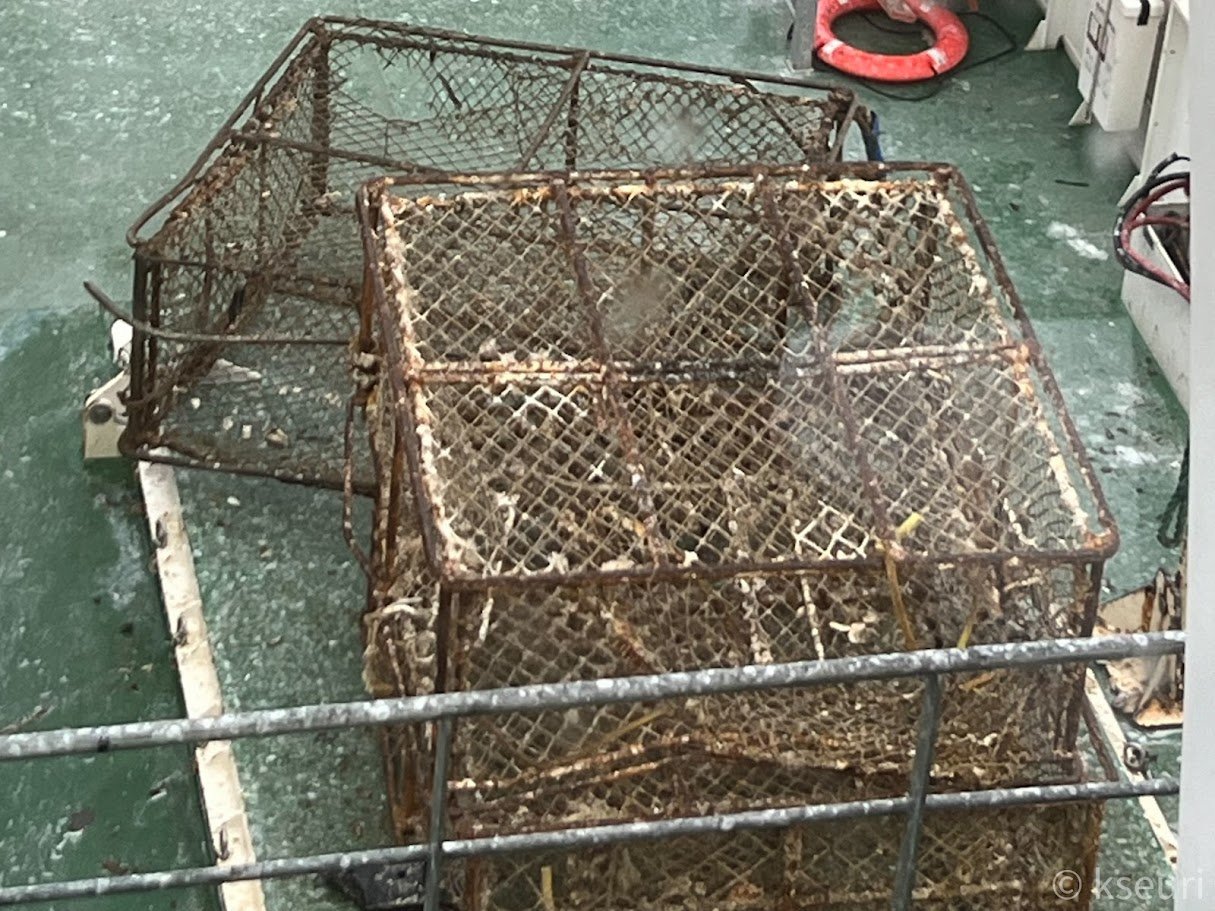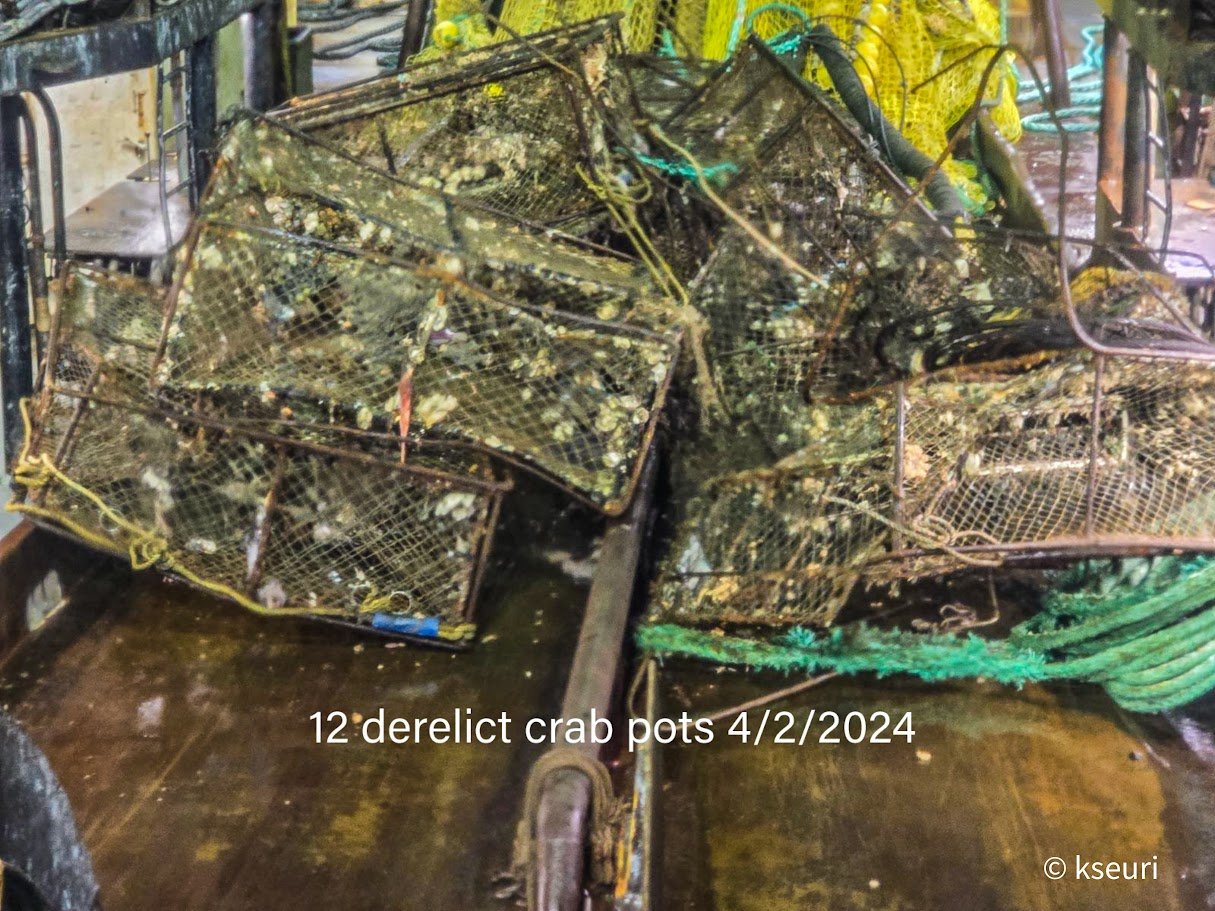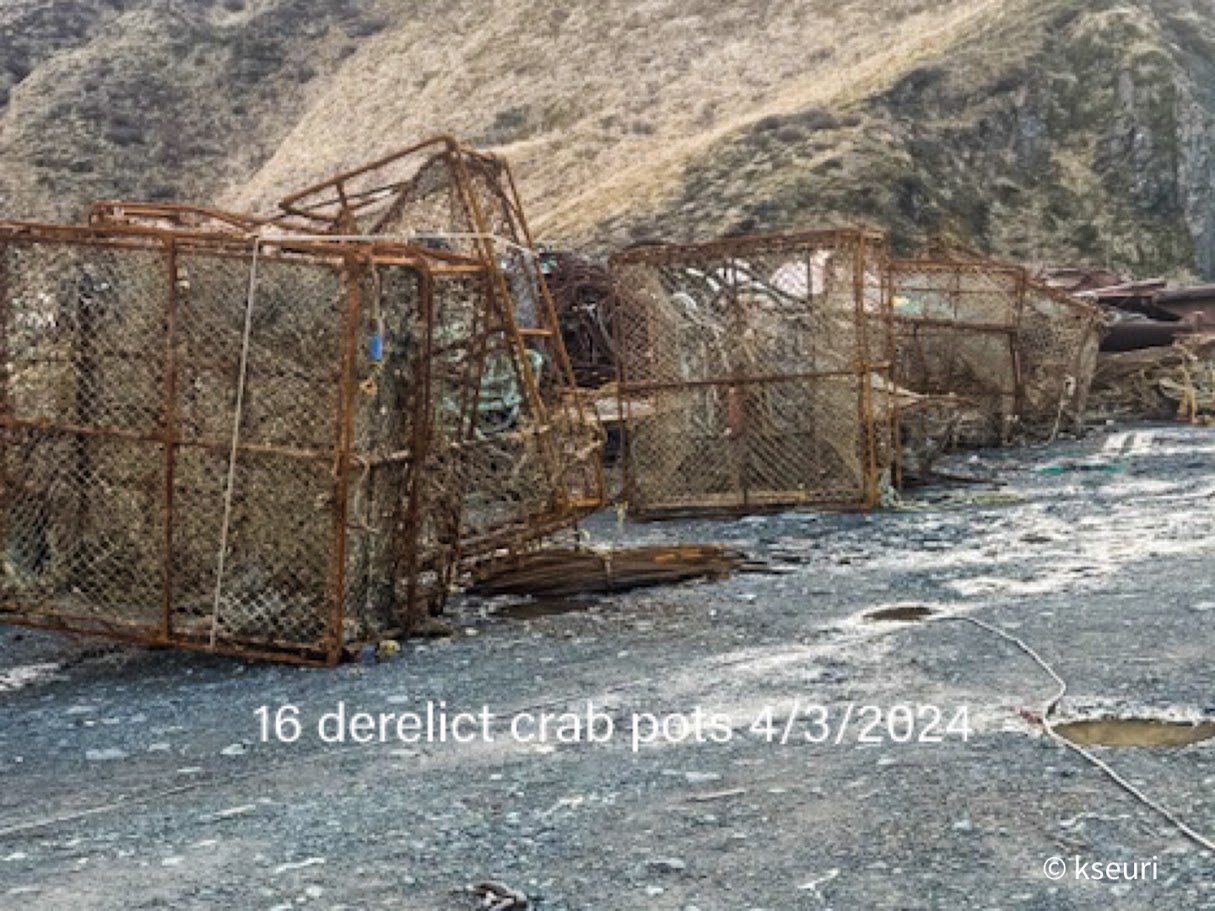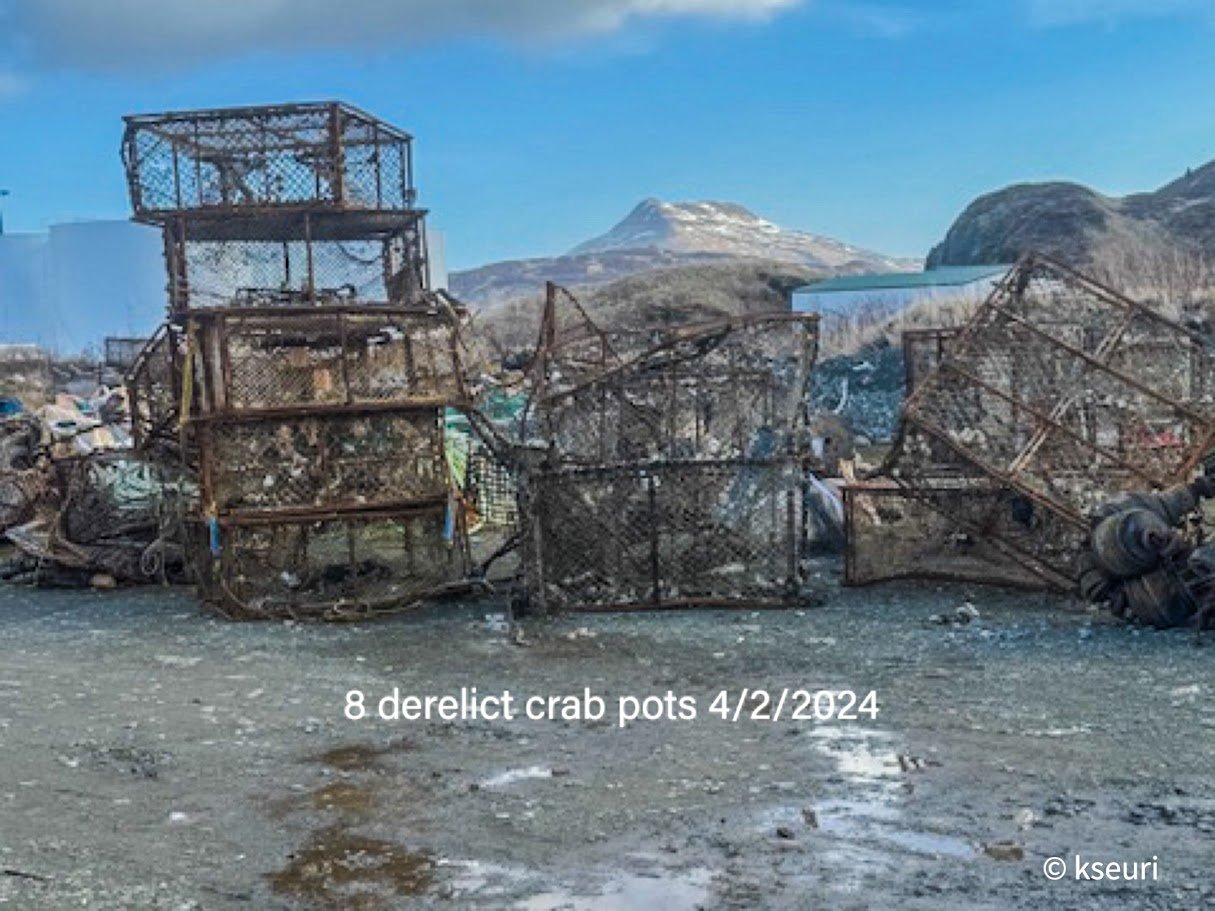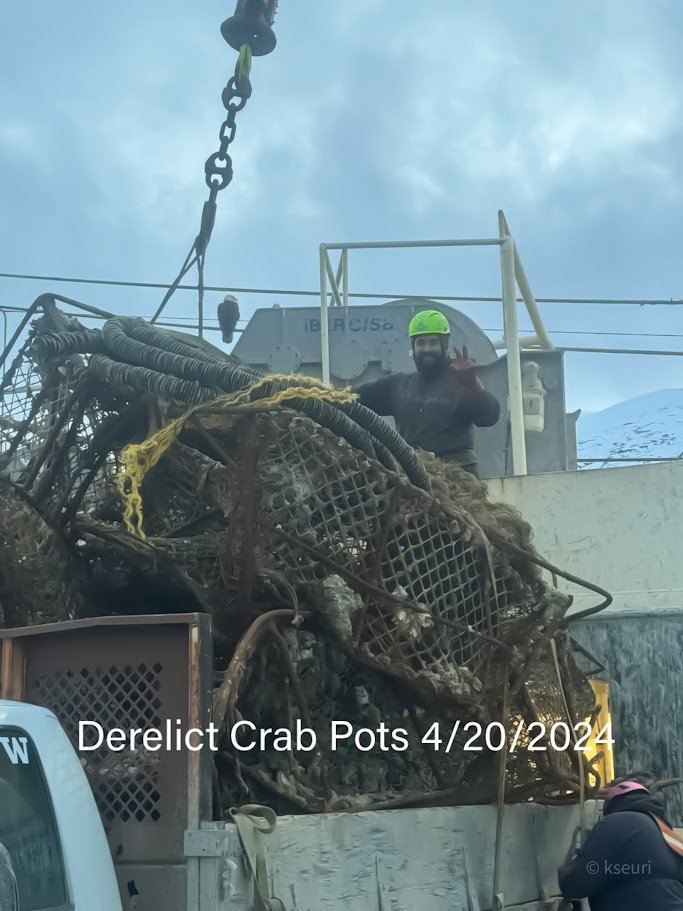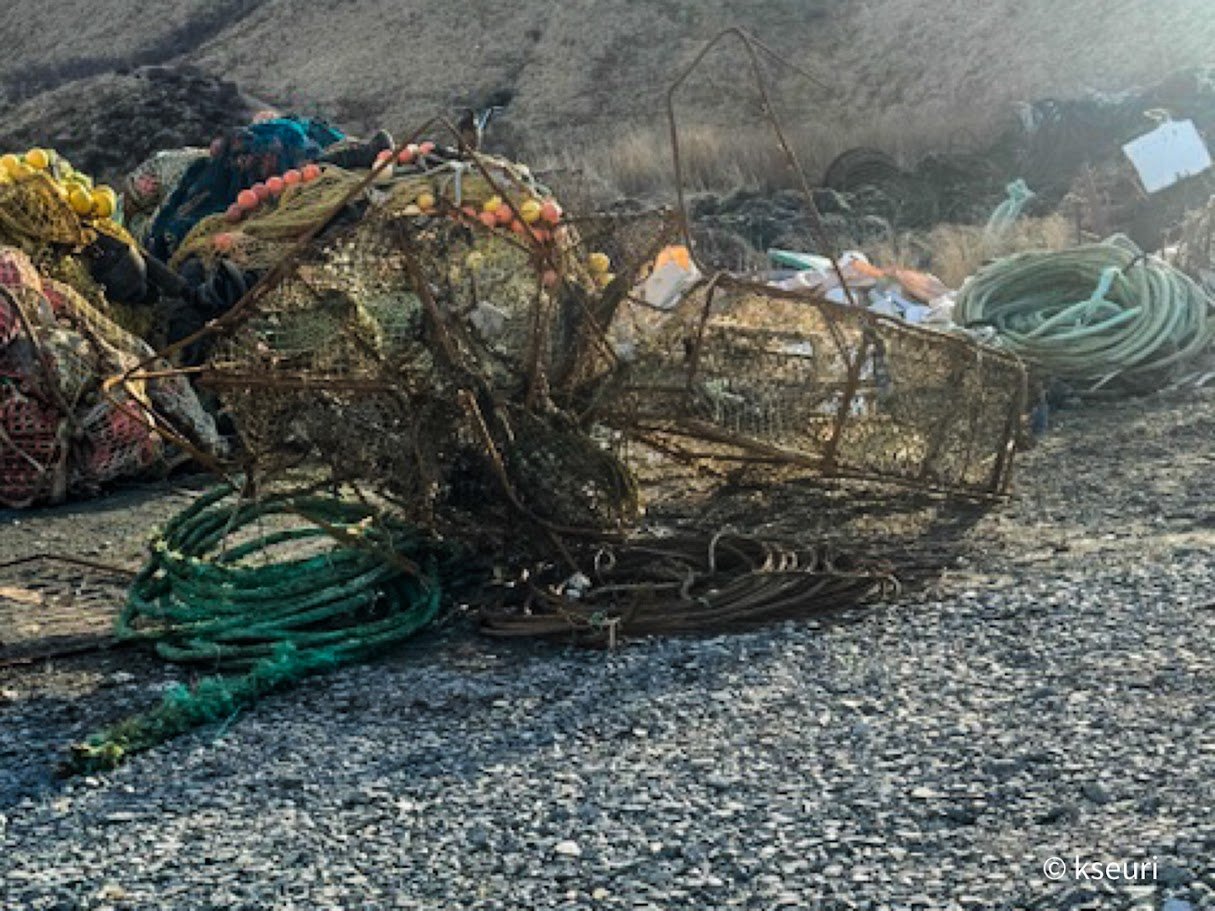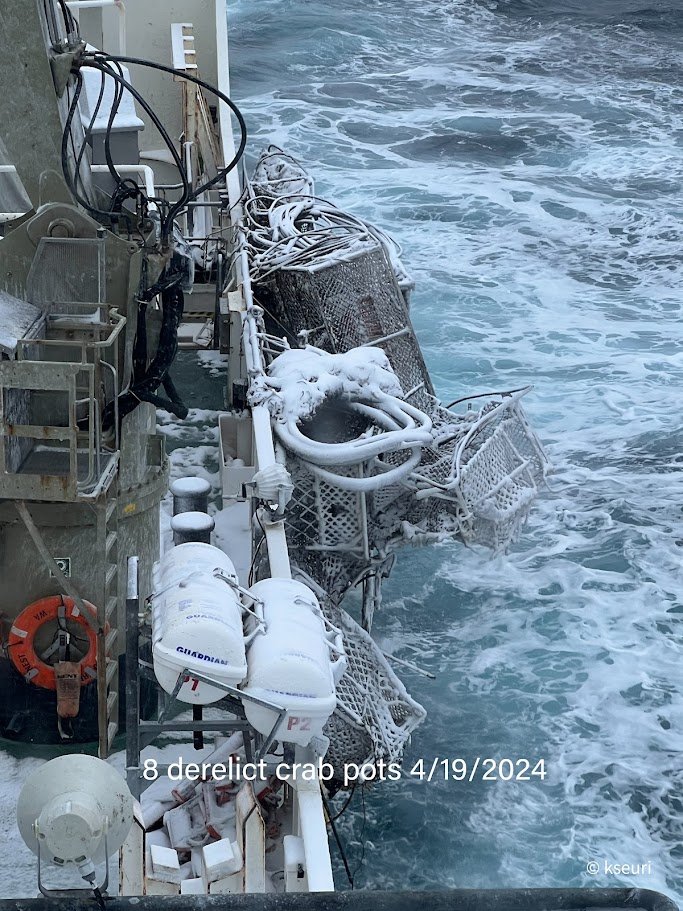Derelict Crab Pots
Fishermen’s Finest, Inc. (FFI) recognizes our responsibility as good stewards of the North Pacific fisheries resources and our unique ability to further National and Global goals of removing derelict fishing gear and marine debris from our environment. As part of this recognition, FFI launched a Derelict Crab Pot Removal Program in 2023.
America’s Finest trip 5, 2024 - 16 derelict crab pots removed from the Bering Sea.
Fishermen’s Finest, Inc. (FFI) recognizes our responsibility as good stewards of the North Pacific fisheries resources and our unique ability to further National and Global goals of removing derelict fishing gear and marine debris from our environment. As part of this recognition, FFI launched a Derelict Crab Pot Removal Program in 2023.
“45 Ghost-Fishing/Derelict Crab Pots brought ashore by Fishermen’s Finest”
Background: Derelict fishing gear, sometimes referred to as “ghost gear,” is defined as gear that has been lost, abandoned, or otherwise discarded at sea. This lost fishing gear may continue to fish, capturing and killing both target and non-target species, while also degrading and altering marine habitats. According to NOAA’s National Ocean Service, derelict fishing gear - such as traps and pots - is one of the main types of debris impacting the marine environment today[1].
Derelict Crab Pots in the Bering Sea: Historical estimates of derelict pot density in the Bering Sea range from 44,000 to 1.7 million lost pots[2]. The most recent analysis shows 592,000 lost and abandoned crab pots on the Bering Sea floor (as calculated from the area swept estimates of actual pot encounters by the trawl fleet between 2008 and 2022)[3].
Impact of Derelict Crab Pots “Ghost Fishing”: The estimate of ghost fished crab kill over the lifetime these derelict pots is 355 million crabs[4].
Solution: NOAA’s 2021-2025 Marine Debris Program Strategic Plan identifies removal of marine debris, including ghost gear, as one of their top priorities[5]. The non-pelagic trawlers in the Amendment 80 sector routinely encounter derelict crab pots during normal fishing operations in the Bering Sea. Federal data shows that crab pots were brought up in close to 20,000 of the nearly 400,000 trawl fishing hauls in the last fifteen years.
FFI operates three non-pelagic trawlers in Amendment 80 fisheries of the Bering Sea which are uniquely situated to retain derelict crab pots onboard and return these derelict crab pots ashore for disposal. Per FFI’s Derelict Crab Pot Removal Program, any derelict crab pots that are unintentionally captured in the course of normal fishing operations will be stored onboard during BSAI fishing trips and offloaded in Dutch Harbor for recycling[6].
What about the rot cord?: Current management requires that Bering Sea crab pots have a “rot cord” made of cotton twine, which is intended to disintegrate after 90 days underwater and allows for a permanent crab escape hatch. However, crab pots recovered in 2023 were covered with substantial undersea growth and contained dead crab - suggesting these pots had been derelict for a significant time – yet the rot cord was intact on each of these pots allowing them to continue to ghost fish.
[1] NOAA. What is ghost fishing? National Ocean Service Website. (https://oceanservice.noaa.gov/facts/ghostfishing.html)
[1] Stevens et al. 2000, Fishery Bulletin; Stevens, Bradley OP-ED 2012 https://www.savingseafood.org/opinion/bradley-stevens-crab-pot-loss-is-a-greater-environmental-issue-than-crab-industry-suggests/
[1] Martell, Steve. SeaState Inc. as presented to the Bering Sea Crab Plan Team January 2024.
[1] National Oceanic and Atmospheric Administration Marine Debris Program. (2020). NOAA Marine Debris Program FY 2021-2025 Strategic Plan. Silver Spring, MD: National Oceanic and Atmospheric Administration Marine Debris Program.
[1] Retention of derelict crab pots is subject to ship safety and Captain’s judgment


